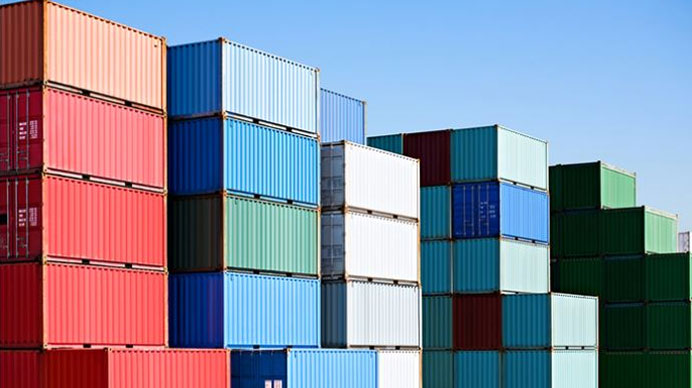The outbreak of a deadly disease in China has cast a dark cloud over growth prospects for the world’s second largest economy, raising fears about the global outlook if the mysterious coronavirus spreads or worsens. There are currently over 4,500 confirmed cases and 106 deaths. The head of China’s health commission warned that “the epidemic has entered a more serious and complex period.” Outside of China, additional cases have been reported in Asia, Australia, Europe, the U.S. and Canada. (A frequently updated infection dashboard using data from the World Health Organization is now online.) The government in Shanghai on Monday extended the Lunar New Year holiday to February 9, in an effort to keep the public at home and avoid spreading infection. Mongolia closed its vast border with China, and Hong Kong and Malaysia announced they would bar entry to visitors from the Chinese province at the center of the outbreak. This is following a warning by medical officials that the virus’s ability to spread was growing.
Hong Kong leader Carrie Lam on Tuesday announced the suspension of high-speed rail and ferry links with mainland China. High-Speed Rail and Intercity Through Train services will be suspended from midnight Thursday, Lam said, adding that the number of flights to the mainland will be halved and personal travel permits for mainland Chinese to Hong Kong suspended.
Additional effects on the shipping industry are could be expected in several ways. We encourage shippers to inform their supply chain teams and customers as necessary.
- Deviation and/or Quarantine of Cargo – With many cities and neighboring countries closing their borders; trucks, vessels, and airlines could be quarantined or deviated from their schedules due to the virus. Late last week, health officials in Mexico and the Port of Mazanillo said they checked 25 ships that arrived from Asia to detect possible cases of coronavirus. Authorities in China have already imposed travel restrictions in Wuhan, and the Centers for Disease Control (CDC) is conducting public health screenings at major U.S. Airports including San Francisco, New York Kennedy, Los Angeles, Chicago O’Hare and Atlanta. Travel between China and Hong Kong will be curtailed, with high-speed trains suspended and other transport reduced.
- Transportation Costs & Delays – Major unpredicted world events are often a positive for ocean shipping freight rates, but not epidemics. Downsides from decreased vessel demand far outweigh positives from fleet inefficiencies – particularly in cases when an epidemic epicenter is China. If an event pushes more volume to sea, or alternatively, makes the same volume detour along a longer or alternative route, it can increase ocean freight rates as it drives the supply/demand balance in the favor of vessel owner/operators. As a reminder, ocean carriers may blank sailings following Chinese New Year. Shippers may need to consider alternative sailings and/or modes of transportation in order to meet deadlines.
- Production Delays – Shanghai and the nearby manufacturing hub of Suzhou ordered residents not to return to work until February 9. The longer break will stretch out a period in which Chinese imports of natural resources that feed production lines typically decline. It could also disrupt industrial activity and prompt Chinese processors to run down stockpiles of crude oil and base metals, instead of buying new material. Oil and copper prices already are taking a hit, economists are forecasting a drop in daily oil demand of 260,000 barrels. The disruption may push back outbound trade flows, including containerized shipments for U.S. retailers that replenish their inventories for the spring.
Please contact your Mallory Alexander Representative if you have questions on specific shipments and/or shipments with a specific deadline.
Costs Spiking due to IMO 2020
Adding insult to injury, the coronavirus threat is transpiring at the same time the shipping industry is introducing new fuel surcharges due to IMO2020 fuel regulations; particularly the dry bulk sector is having negative reaction to the much higher fuel bills of burning VLSFO. Since January 1, the IMO 2020 rule has required ships not equipped with exhaust-gas scrubbers to burn 0.5% sulfur fuel known as very low sulfur fuel oil (VLSFO) or 0.1% sulfur marine gasoil (MGO), not less expensive 3.5% sulfur heavy fuel oil (HFO). While many analysts, executives and investors have focused on the cost advantage of scrubber-equipped ships, the more important indicator is the year-on-year change in fuel costs as most ships do not yet have scrubbers installed. Most companies with plans to put scrubbers on all of their ships, have only installed a limited number so far due to installation delays at Chinese yards. These delays could potentially escalate due to the coronavirus if the outbreak restricts work at Chinese yards.
In an effort to keep our customers aware of the IMO 2020 updates, our Global Transport Team has updated our comprehensive summary of all carriers and their IMO 2020 position. These lists include the most recent carrier surcharges. See the spreadsheet for Trans-Pacific Eastbound Trade here.
Sources: FreightWaves, ABC News, New York Post, and Wall Street Journal


